There was a time not too long ago when anglers were allowed to kill as many as 30 wild steelhead a year in Washington State. This excessive sport harvest was a major factor in why Steelhead Country, a wondrous place where rivers once ran silver with wild steelhead, has transformed into a state with an abundance of steelhead habitat but a deficiency in wild steelhead.
Recognizing the need to reduce wild steelhead harvest, the Wild Steelhead Coalition (WSC), which was founded in 2001, decided to make stopping sport harvest of wild steelhead the organization’s initial priority. Over the course of the next fourteen years, WSC worked with other local fish conservation organizations to push this agenda and gradually moved the needle from thirty wild steelhead per year down to just one. Then in December 2015, after more than fourteen years of tireless work, searun Oncorhynchus mykiss were awarded a major conservation victory when the Washington Fish and Wildlife Commission responded to overwhelming support from anglers and voted unanimously to ban recreational wild steelhead harvest across the state.
This sacrifice and the years of arduous work to eliminate sport harvest of Washington’s dwindling steelhead populations is just one of the many reasons why steelheaders across the country are justifiably outraged by Monterey Bay Aquarium Seafood Watch’s recent decision to designate Olympic Peninsula (OP) wild steelhead a “Good Alternative” fish choice. Frankly, it is hard to understand how a supposedly conservation-minded organization—one that serves as a guide for helping consumers make responsible fish purchases—could deem nonselective, in-river gillnet fisheries for threatened wild steelhead “sustainable”.
Seafood Watch’s recommendations serve as a sustainable fish purchasing north star for well-intentioned stores, restaurants, and individuals across the United States. The potential impact of their designation is huge. Now restaurants and stores including Whole Foods Market can sell wild steelhead from iconic rivers such as the Quillayute, Hoh and Bogachiel as a “sustainable” fish choice. Moreover, consumers will pay a premium for these threatened fish believing they are doing the right thing while nothing could be further from the truth.
Decades of data make a clear, unmistakable case that these wild steelhead populations are in an accelerating decline. According to data from the Washington Department of Fish and Wildlife, wild steelhead populations on the Olympic Peninsula experienced as much as a 57 percent decline in numbers since 1980.
- The Hoh’s wild steelhead population has declined by 34 percent since 1980 and has only met its escapement goals 50 percent of the time since 2000.
- The Queets’ wild steelhead population is a mere 43 percent of what it was in 1980 and despite this loss, there is not an established escapement goal.
- The Quillayute’s wild steelhead population has declined sharply since the mid-1990s and run sizes and escapements have reached some of their lowest levels on record in recent years.
- Last year the wild steelhead escapement in the Bogachiel was a disturbingly low 733 steelhead – by far its lowest on record.
We’ve seen declines like this before in Washington State, and we know exactly what they mean for both fish and fishermen. The downward spiral on Olympic Peninsula rivers is eerily similar to the declines that preempted the Endangered Species Act (ESA) listing of Puget Sound wild steelhead. If these trends continue, the Olympic Peninsula will likely suffer the same fate Puget Sound has – wild steelhead populations will be ESA-listed and famed rivers will be closed to recreational fishing. Unfortunately, Seafood Watch’s designation could be the last straw that pushes over the cliff.
While many outraged anglers respect tribal treaty rights to responsibly harvest salmon and steelhead when abundance allows, too much evidence exists that makes it clear that this fishery is not being responsibly fished and that the abundance does not exist. Therefore, it is unfathomable that Seafood Watch could have taken a critical, unbiased view of this fishery and felt there was sufficient scientific justification to slap its seal of approval on it.
That seal of approval has the potential to be the final nail in the coffin of iconic wild steelhead runs on cherished Olympic Peninsula rivers. As supporters of wild steelhead, we cannot let that happen. Please take action today and encourage your friends and family to tell Seafood Watch to take wild steelhead off the menu.






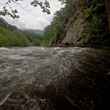









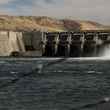








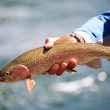


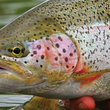
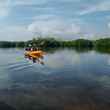
Comments